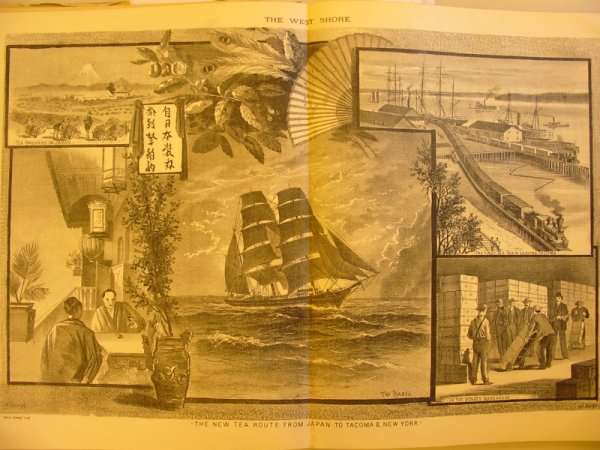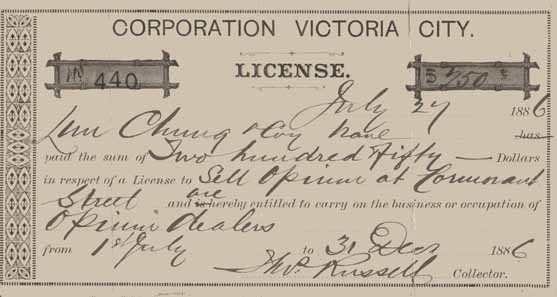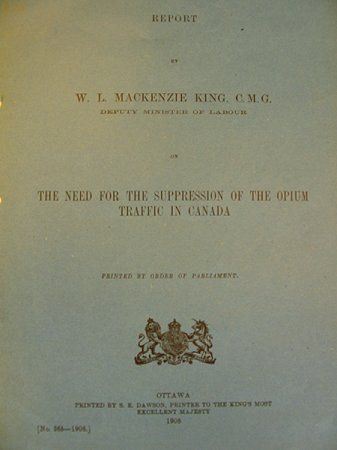

Because of the amount of revenue generated from the opium
trade, a series of legislations were passed and the license fee for selling
opium increased progressively. Dr John S. Helmcken, a member of the Vancouver
Island Legislature introduced a motion to license fee of $100 on opium sellers
in 1865; in 1886, an opium license was issued to Lun Chung at $250; from
a letter to a city council member dated June 22, 1894, a merchant requests
for a reduction of license fee from $500 to $300.4
Source: Victoria City Archives 98701-28-2433
Table I
Duty on Opium Imported Into British Columbia, 1872 - 1899.
Source: Canada. Tables of the Trade and Navigation, Dominion of Canada, Ottawa.
Duty on Opium Imported Into British Columbia, 1872 - 1899.
| Selected Years |
Amount of Duty |
| 1874 |
$2,493 |
| 1875 |
4,836 |
| 1876 |
15,331 |
| 1881 |
13,668 |
| 1887 |
53,172 |
| 1889 |
101,244 |
| 1890 |
137,050 |
| 1891 |
146,760 |
| 1892 |
144,593 |
| 1894 |
91,843 |
| 1895 |
36,056 |
| 1897 |
51,580 |
| 1899 |
39,704 |
Source: Canada. Tables of the Trade and Navigation, Dominion of Canada, Ottawa.
Using the above table, we can see that the revenue generated from the Opium trade in BC rose substantially from since 1874. It hit its peak from 1889 to 1892. In Dr. David Lai's book Chinatowns: Towns Within Cities in Canada, he states that in 1884, there were 6 opium factories in Victoria. However, by 1887, there were 13 opium factories in Chinatown.5 Kwong Lee, Tai Soong, and Yan Wo Sang were Victoria's first opium importers. But by 1880s, Victoria's see a population growth when the contractors for the Canadian Pacific Railway imported Chinese laborers. Thus, more opium factories were built. Because of this railway boom, there was fierce competition between the opium factories among themselves. In 1886, Sing Wo Chan's "Tai Yuen Brand" sold at $7/lb instead of $10/lb, driving out the competitors.6 Nonetheless, it was such a profitable trade that by 1888, 13 opium factories had produced an annual output of nearly 90,000lbs of opium at $15 a pound.7

A running bill from Kwong On Lung
& Co. in Victoria, one of the opium factories. The invoice - dated
July 29, 1885 - is made out to Mrs. Tai Chung who ran a tab of $3436.88 for
a variety of items including several purchases of opium.
Source: Barbara Hodgson, Opium: A Portrait of the Heavenly Demon, 1999, p. 114.

Interior of a San Francisco Chinese
Grocery Store, undated. This store would have probably sold opium, along
with other medicine, herbs, and general goods.
Source: Barbara Hodgson, Opium:
A Portrait of the Heavenly Demon, 1999, p. 115.
The growing Chinese population was only one of the reasons
why opium manufacturing succeeded in Victoria; it was also the center for
opium smuggling on the west coast of Canada. In 1880, the United States
and China came to an agreement that prohibited opium import into the other
country. Therefore, Chinese opium merchants in the US could no longer
import opium directly from China, but rather, having to rely on opium supplies
coming from Victoria. Smuggling of opium was common because the duty
on opium was $5 a pound in Canada but $10 a pound in the US.8 The
Canadian government were aware of the smuggling problem but did little to
surppress it simply because the trade helped to promote opium manufacturing
and thus generating revenue for the government.


Since its introduction to China in the 1790s, opium had destroyed not only lives of Chinese but of the Whites as well. In a report compiled by W. L. Mackenzie King, Deputy Minister of Labor at Vancouver, he witnessed a Caucasion woman sedated by this deadly venom. This woman dressed in middle-class attire was walking on the street apparently dazed. To his surprise, he discovered that opium was legal on this end of the nation. It was this report "The Need for the Surppression of the Opium traffic in Canada" that eventually led to the ban on opium on July 20, 1908.
Source: BC Archives. 24705546.
Thus, we can see how a small city of Victoria - and more notably, Vancouver - were able to influnce a nation-wide legislation. Using a microhistorical perspective, even though the opium trade is largely confined to the west coast of Canada, it had a profound affect upon policy at large.

Source: Un Vice Nouveau
(A New Vice). Le Petit Journal, July 5 1903.

Since its introduction to China in the 1790s, opium had destroyed not only lives of Chinese but of the Whites as well. In a report compiled by W. L. Mackenzie King, Deputy Minister of Labor at Vancouver, he witnessed a Caucasion woman sedated by this deadly venom. This woman dressed in middle-class attire was walking on the street apparently dazed. To his surprise, he discovered that opium was legal on this end of the nation. It was this report "The Need for the Surppression of the Opium traffic in Canada" that eventually led to the ban on opium on July 20, 1908.
Source: BC Archives. 24705546.
Thus, we can see how a small city of Victoria - and more notably, Vancouver - were able to influnce a nation-wide legislation. Using a microhistorical perspective, even though the opium trade is largely confined to the west coast of Canada, it had a profound affect upon policy at large.